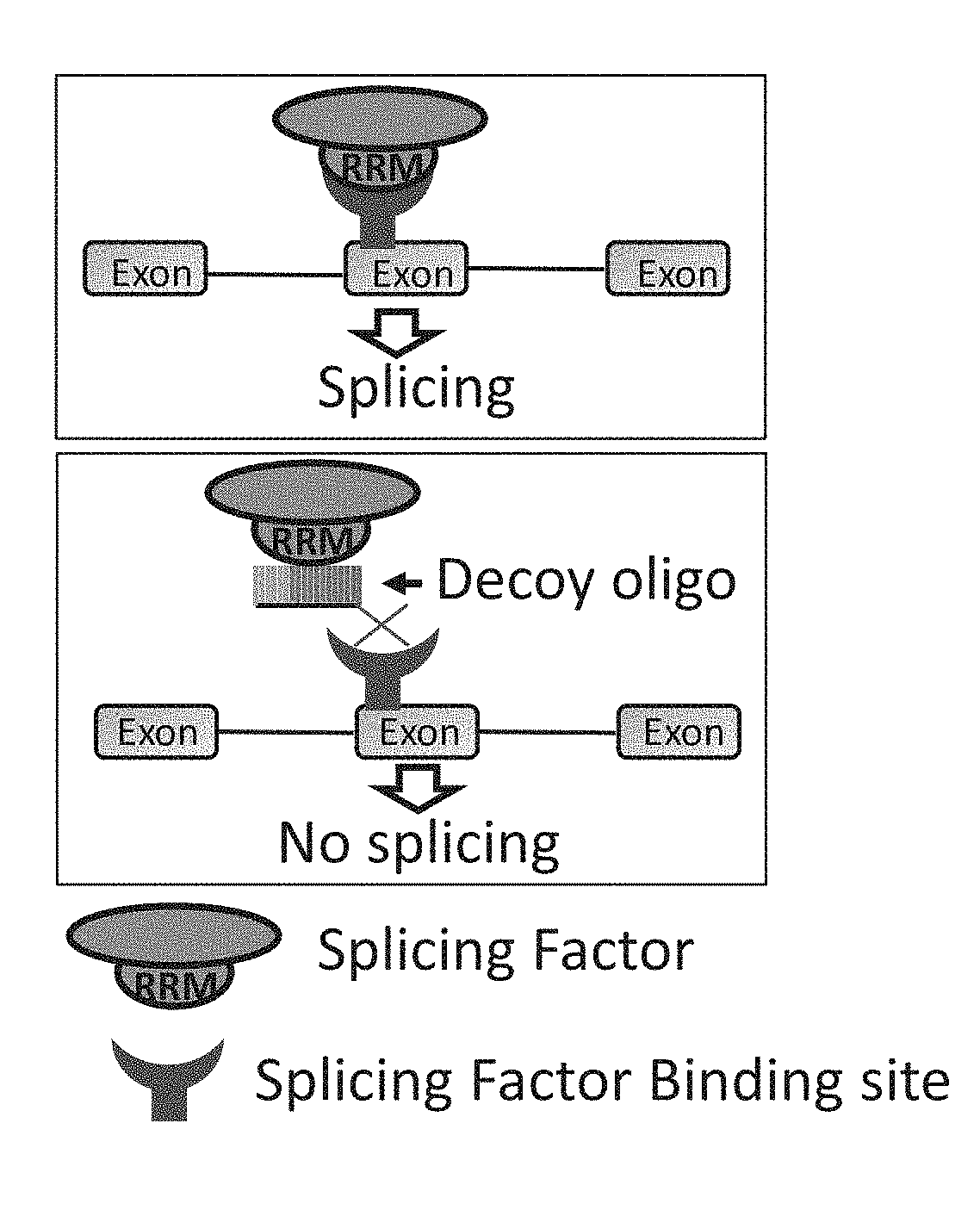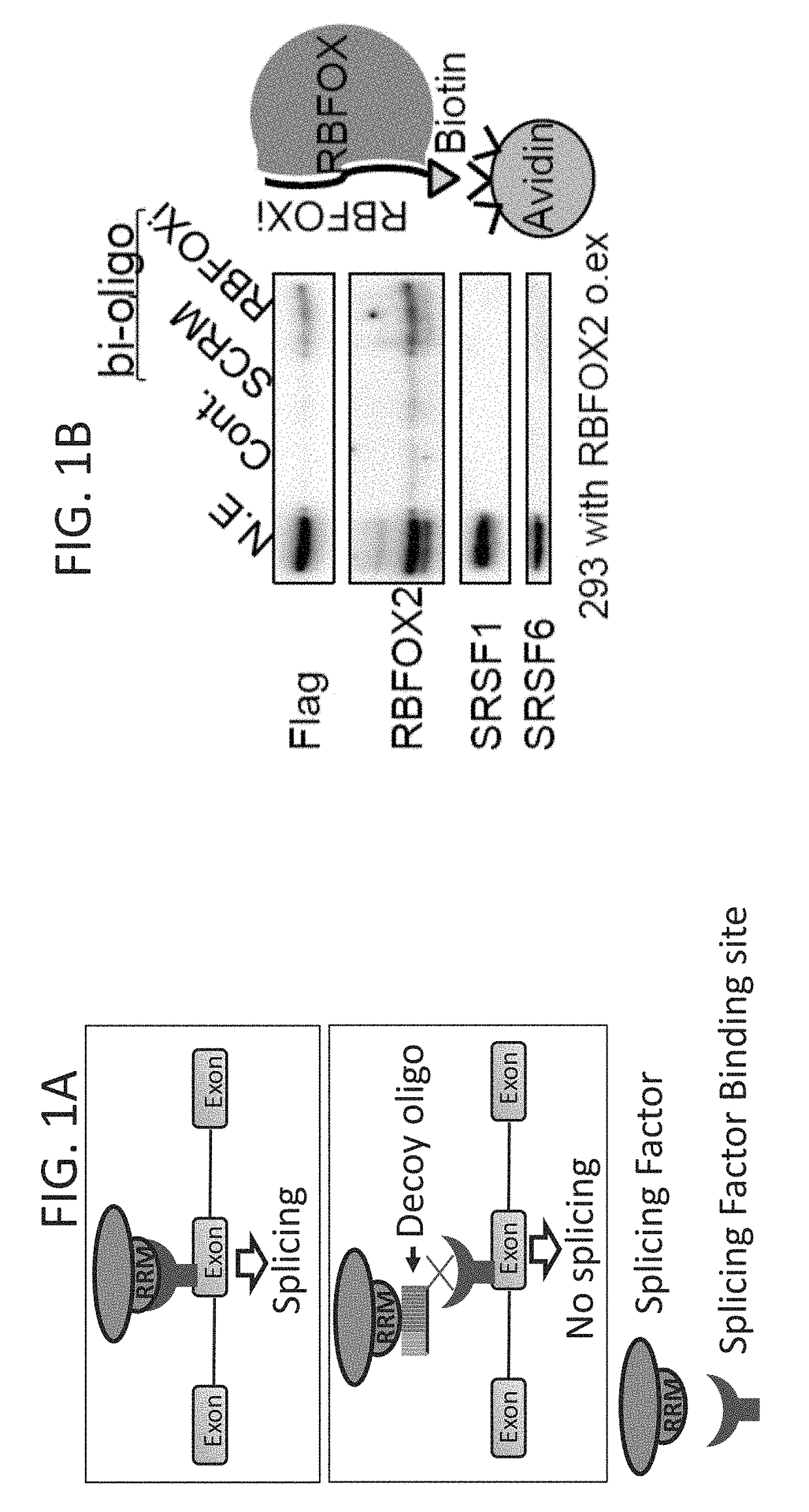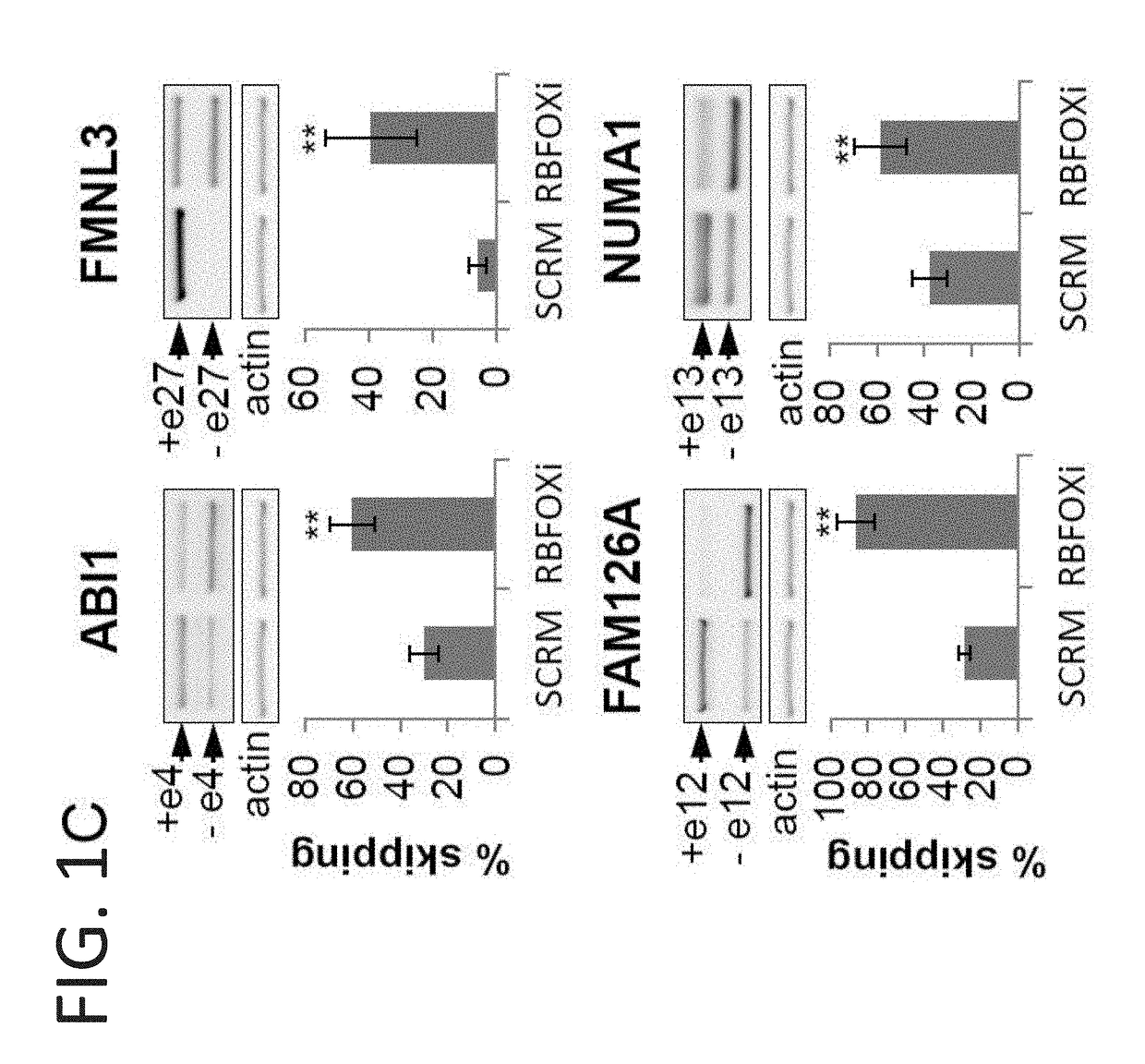Decoy oligonucleotides for the treatment of diseases
a splicing factor and oligonucleotide technology, applied in the field of decoy oligonucleotides encoding splicing factor binding sites, can solve the problems of resistance to chemotherapeutic drugs, loss of tumor suppressor activity, and decreased apoptosis in tumors, so as to reduce the total splicing activity of splicing factor
- Summary
- Abstract
- Description
- Claims
- Application Information
AI Technical Summary
Benefits of technology
Problems solved by technology
Method used
Image
Examples
example 1
RBFOX2 Inhibition Using Decoy Oligonucleotides
[0203]After determining that the RBFOX decoy oligo (RBFOXi) binds to RBFOX2 (FIG. 1B) the present inventors established that this binding results in a change in splicing of known RBFOX splicing targets (FIG. 1C, FIG. 5C) in a dose dependent manner (FIG. 5D). These alternative splicing changes are similar to the changes observed in U87MG and MDA-MB-231 cells upon RBFOX2 knockdown (FIGS. 5E-F) and to previous reports6.
[0204]It has been shown that RBFOX proteins are essential for the development and function of muscle and heart in zebrafish. This model system was used to determine if inhibition of RBFOX proteins with the decoy oligos results in the same phenotype as RBFOX knockdown by morpholino antisense oligos. Fertilized zebrafish eggs were injected with RBFOXi and SCRM oligos (FIG. 1D) Changes in alternative splicing of four (muscle related) known RBFOX targets were observed in RNA isolated from fertilized zebrafish eggs injected with R...
example 2
SRSF1 Inhibition Using Decoy Oligonucleotides
[0205]Two decoy oligonucleotides (SF2i1 and SF2i2) were designed to inhibit the splicing factor SRSF1. Introduction of these oligos into U87MG and MDA-MB-231 cells resulted in changes in splicing of three known targets of SRSF1—namely INSR7, U2AF18 and MKNK23 when compared to cells with SCRM oligo (FIG. 2A and FIG. 6B). Splicing patterns were altered in a dose dependent manner (FIG. 6C). Both SRSF1 decoy oligos had similar effects on splicing of SRSF1 targets, with SF2i2 having a stronger effect than SF2i1 (FIG. 2A and FIG. 6B). To determine the effect, if any, of number of motif repeats on the efficiency of the decoy oligo, oligos containing one to five repeats of the motif CGCAGGA (SF2i2) were tested. The effect on splicing of U2AF1 and MKNK2 correlated with motif repeat number, with five repeats having the greatest effect on splicing. Changes in splicing of the INSR reached a plateau with oligos containing three-four repeats, with no f...
example 3
Treatment of Cancer Using Decoy Oligonucleotides Against SRSF1
[0206]Given that SRSF1 acts as an oncoprotein and its inhibition with decoy oligos activated the p38-MAPK stress pathway, the present inventors predicted that treatment of cancer cells with SRSF1 decoy oligos would result in reduced oncogenic abilities. Indeed, treatment of cells with SFRSF1 decoy oligos, SF2i1 and SF2i2, inhibited proliferation (almost 3-4 fold) compared to RBFOXi or SCRM oligo (FIG. 3A, FIG. 7A). In a colonogenic assay that assesses the ability of cells to survive and proliferate under stress conditions, SF2i1 and SF2i2 dramatically inhibited the cells' ability to form colonies compared to the scrambled oligo (FIG. 3B, FIG. 7B, D). The ability to form colonies in soft agar was also strongly reduced in cells treated with SF2i1 and SF2i2, while treatment with RBFOXi had an insignificant effect (FIG. 3C, FIG. 7C). To verify that the observed reduced oncogenic activity is due to activation of the p38-stress...
PUM
| Property | Measurement | Unit |
|---|---|---|
| pharmaceutical composition | aaaaa | aaaaa |
| structure | aaaaa | aaaaa |
| ligand affinity | aaaaa | aaaaa |
Abstract
Description
Claims
Application Information
 Login to View More
Login to View More - R&D
- Intellectual Property
- Life Sciences
- Materials
- Tech Scout
- Unparalleled Data Quality
- Higher Quality Content
- 60% Fewer Hallucinations
Browse by: Latest US Patents, China's latest patents, Technical Efficacy Thesaurus, Application Domain, Technology Topic, Popular Technical Reports.
© 2025 PatSnap. All rights reserved.Legal|Privacy policy|Modern Slavery Act Transparency Statement|Sitemap|About US| Contact US: help@patsnap.com



